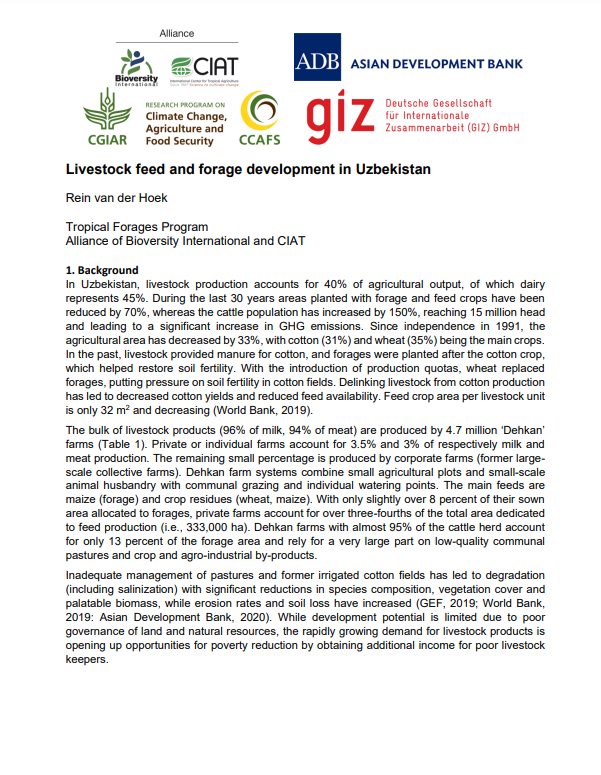In Uzbekistan, livestock production accounts for 40% of agricultural output, of which dairy represents 45%. During the last 30 years areas planted with forage and feed crops have been reduced by 70%, whereas the cattle population has increased by 150%, reaching 15 million head and leading to a significant increase in GHG emissions. Since independence in 1991, the agricultural area has decreased by 33%, with cotton (31%) and wheat (35%) being the main crops.
In the past, livestock provided manure for cotton, and forages were planted after the cotton crop,which helped restore soil fertility. With the introduction of production quotas, wheat replaced forages, putting pressure on soil fertility in cotton fields. Delinking livestock from cotton production has led to decreased cotton yields and reduced feed availability. Feed crop area per livestock unit is only 32 m2 and decreasing (World Bank, 2019).
The bulk of livestock products (96% of milk, 94% of meat) are produced by 4.7 million ‘Dehkan’ farms. Private or individual farms account for 3.5% and 3% of respectively milk and meat production. The remaining small percentage is produced by corporate farms (former largescale collective farms). Dehkan farm systems combine small agricultural plots and small-scale animal husbandry with communal grazing and individual watering points. The main feeds are maize (forage) and crop residues (wheat, maize). With only slightly over 8 percent of their sown area allocated to forages, private farms account for over three-fourths of the total area dedicated to feed production (i.e., 333,000 ha). Dehkan farms with almost 95% of the cattle herd account for only 13 percent of the forage area and rely for a very large part on low-quality communal pastures and crop and agro-industrial by-products.
Inadequate management of pastures and former irrigated cotton fields has led to degradation (including salinization) with significant reductions in species composition, vegetation cover and palatable biomass, while erosion rates and soil loss have increased (GEF, 2019; World Bank, 2019: Asian Development Bank, 2020). While development potential is limited due to poor governance of land and natural resources, the rapidly growing demand for livestock products is opening up opportunities for poverty reduction by obtaining additional income for poor livestock keepers.
Hoek, Rein van der![]()

